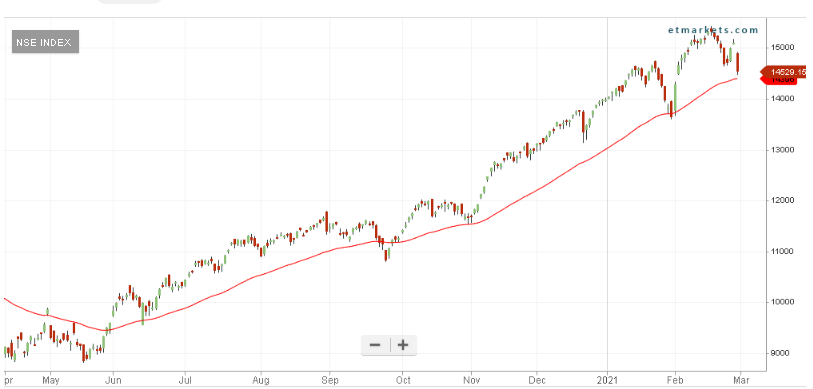
There are nearly unlimited methods for calculating a moving average as well as tuning the lookback periods for different time frames and investor preferences. Is the 200-day moving average perfect? Of course not. From a risk management standpoint, this indicator has historically lent itself to being a useful tool that investors can add to their toolbox in the pursuit of controlling exposure to market environments that have been characterized by a higher-than-normal probability of loss. Beloved by Market Technicians and Fundamental investors alike, it has stood both the test of time and market lore as one of the most popular indicators on several charting platforms. The 200-day moving average has been a useful measure of the long-term trend for as long as investors, analysts, and money managers have been putting pencil to chart paper. These data again suggest a heightened level of risk when the S&P 500 is trading below its 200-day moving average.įinal Thoughts on the 200-Day Moving Average When the S&P 500 closed below its 200-day moving average, median sector performance was a gain of 2.46%, with a 58.55%-win rate over the following quarter of trading on a sample size of 15,005 since 1999.Īgain, a very similar dynamic is noted in that while median gains for the sector ETF group were both positive, we see lower win rates in the sector ETFs along with significantly deeper declines at the 20th percentile.


When the S&P 500 closed above its 200-day moving average, median sector ETF performance was a gain of 2.54%, with a 65.23%-win rate over the following trading quarter on a sample size of 40,393 since 1999. Perhaps a more scientific exploration of detrended data would give us different results.ĭigging further into the data, we find a similar dynamic for S&P 500 sector ETF performance when the index closes above and below its own 200-day moving average. In fact, we would argue that the positive returns while the index is below the moving average are a function of the market’s tendency to move higher over time. In fact, if investors used this system in isolation (which they should not), history suggests that there is a significantly higher likelihood of a deeper decline when the index spends time below the moving average. Again, just because returns have historically been positive does not mean that risk has stayed the same. While it is noteworthy that median gains have historically been positive in the instances where the index closed below its 200-day moving average, median gains have been lower than closing above the average, in addition to a significantly lower win rate, only slightly better than the flip of a coin.Īn additional metric worth drawing attention to is returns at the 20th percentile -1.95% when closing above the average vs. When the S&P 500 is below its 200-day moving average, median gains have tended to return 1.83% with a 56.97%-win rate over the following quarter of trading on a sample size of 5,172 since 1952. When the S&P 500 is above its 200-day moving average, median gains have tended to return 2.77% with a 70.10%-win rate over the following trading quarter on a sample size of 12,814 since 1950.

Now that we have explored the concept of trend, another question needs to be answered: how do we stay on the right side of the trend? The simplest answer is often to use the 200-day moving average as a filter we are in when the market price is above the average, and we are out when the market price is below the average.įor a simple illustration, let’s review the historical behavior of the S&P 500 when these conditions are present. However, we note that this post is timely given the current proximity of the index to its 200-day moving average currently. The purpose of this blog is to provide insight into the 200-day moving average primarily as a risk management tool and explore the historical context of the behavior of the S&P 500 when it closes both above and below its own 200-day moving average.

Some will posit that this indicator is an outdated relic of the past, harking from the days when charts were drawn by hand and numbers rounded to provide quicker calculation, while others elevate the indicator in isolation as the holy grail of all trading systems. Its uses are limited by the skill and experience of its user rather than its own merit. However, it’s just a tool like anything else at the end of the day. Roughly equivalent to ten months of trading, this measure of long-term trend has found uses in everything from trading to risk management. The 200-day moving average is arguably the most widely cited Technical Analysis indicator among financial media journalists, investment analysts, and portfolio managers alike.


 0 kommentar(er)
0 kommentar(er)
